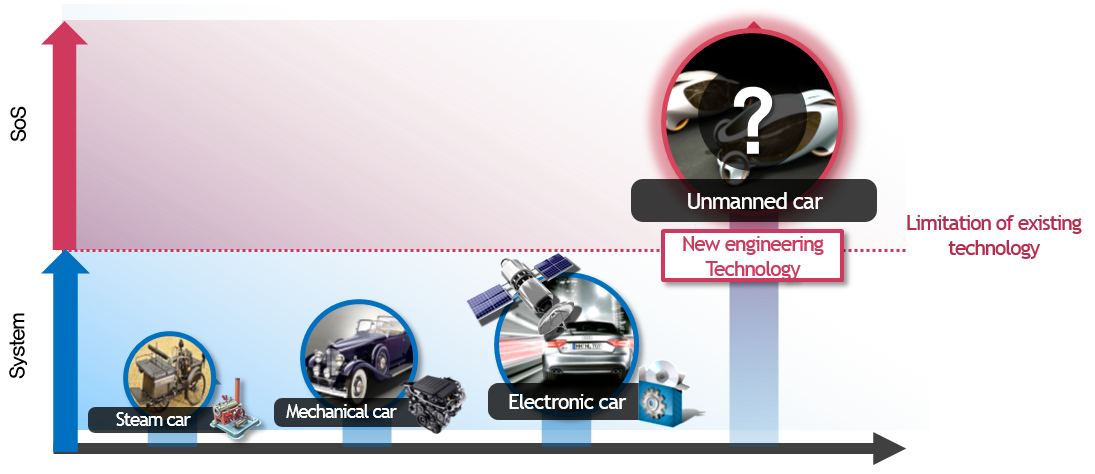Definition of SoS
- Two or more systems that are separately defined but operate together to perform a common goal. – Checkland 1999, “Systems Thinking, Systems Practice” (citation: 9099)
- SoS applies to a system of interest whose system elements are themselves systems; typically these entail large scale inter‐disciplinary problems with multiple, heterogeneous, distributed systems. – INCOSE 2012, “Systems Engineering Handbook: A Guide for System Life Cycle Processes and Activities” (citation: 160)
- SoS is an assemblage of components which individually may be regarded as systems and which possesses two additional properties. operational independence of the components and managerial Independence of the components. – Maier 1998, “Architecting Principles for Systems-of-Systems” (citation: 1091)
-
Not all SoS will exhibit all of the characteristics, but it is generally assumed that a SoS is characterized by exhibiting a majority of the Maier Criteria. –SEBok wiki (“Guide to the System Engineering Body of Knowledge”, INCOSE project)
- Maier’s two criteria
- Operational independence of the CSs
- Managerial independence of the CSs
- Maier’s five characteristics for SoS
- Operational independence of the CSs
- Managerial independence of the CSs
- Geographical distribution
- Emergent behavior
- Evolutionary development processes

Classification of SoS
- Maier defined three types of SoS in 1998. -“Architecting principles for System of Systems”
- Virtual SoS
- Collaborative SoS
- Directed SoS
- In Dahmanns & Baldwins book “Understanding the current state of US defense system of systems and the implications for systems engineering(2008)”, they additionally defines 1 category. So, four types of SoS are
- Virtual SoS
- The SoS is without either managerial control or a common purpose. This makes the behavior and the fulfilled goals highly emergent, but also entails that the exact means and structures producing the system functionality are difficult to discern and distinguish.
-
Collaborative SoS
- The SoS recognizes a common purpose and goal, while the constituent systems retain independent control and objectives. Evolution of the common purpose is based on collaboration between the SoS and the constituent systems.
-
Acknowledged SoS (between Collaborative SoS and directed SoS)
- The constituent systems are not compelled to follow a central management, but voluntarily participate in a collaboration to fulfil the goal.
- Directed SoS
- The SoS is built to fulfil specific purposes. Constituent systems have the ability to operate independently, but are managed to satisfy a concrete purpose.

Taxonomy of SoS


